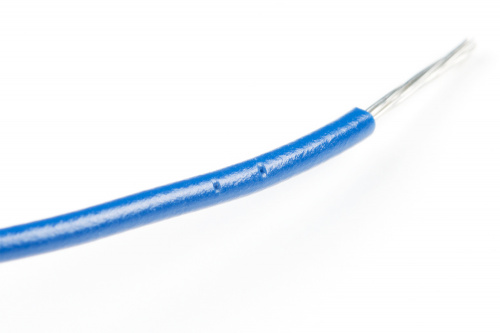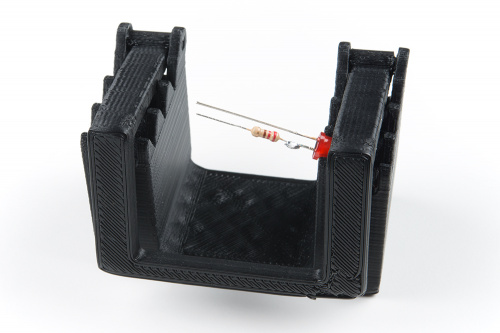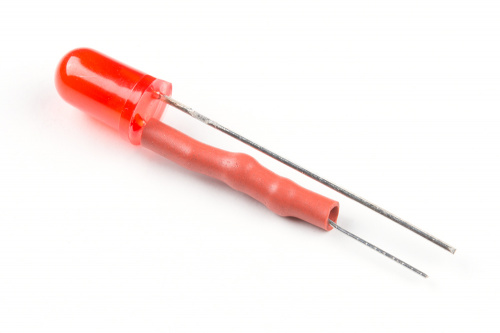Thingiverse user mistertech published his Soldering Helping Hands device last year. Even though it's not particularly new, I can't get over incredibly how useful this simple, 3D-printed design is.
You may ask, "Why do I need another single-purpose device on my desk, which is already covered with irons, clippers, flux, solder, rework stations, etc.?" I'll tell you why: It's not a single-purpose device.
I already have a set of helping hands on my desk that are wonderfully useful for holding boards, wires, parts, etc. when I need to solder things at weird angles. However, I find that they have a habit of biting into my wire insulation (yes, I even wrapped the alligator clips with tape, and yes, those sharp jaws eventually make their way through it).
Enter mistertech's Soldering Helping Hands. The (relatively) cushy ABS or PLA plastic bits do not bite into your precious wire insulation. The rudimentary clamp seems to do fine holding everything in place, and there's enough space to hold up to six wires! When you're trying to tin a bunch of stripped ends, this can be a lifesaver.
Of course, you can use it to hold wires to be spliced together. That was the intended purpose. In all honesty, I probably do that the least with this little clamp. Oddly enough, I often find myself having to solder a resistor directly to an LED to be used as an indicator light on a project. Guess what? These "helping hands" save the day again.
Add some heat shrink tubing, and you've got yourself an LED with a built-in limiting resistor!
These "helping hands" are useful for holding small-ish cylindrical objects close together so you can get at them with a soldering iron. While it accomplishes a very similar purpose to traditional helping hands, it saves you some time fussing over positioning and sharp alligator teeth. For wire tinning and splicing, I reach for mistertech's device. If I need to hold a PCB perpendicular to a set of headers while I solder, I still use my traditional helping hands.
If you enjoy soldering and have access to a 3D printer, do yourself a favor and print mistertech's Soldering Helping Hands. You'll be glad you did.
What other 3D printed devices do you recommend for helping you organize or build your projects?











Good to know for a knowledge that 3d-printed soldering helping hands which is an extremely useful device to help you with soldering. It is very useful tool that can help people in doing soldering things quick. Lauren, Career consultant at CV Folks.
I packed Sugru into my bitey helping hands clamps to prevent damage to the wire insulation. It's soft and grippy. Works great.
Ooooo...I like the Sugru idea. I may have to do that for when I still need to use the bitey hands.
Long ago I found that some manufacturers make LEDs with integrated resistors. I have some 3mm LEDs (with 0.1" pin pitch) that I often use on arduinos as simple status checking. (Yes, takes two adjacent GPIO pins as one has to be logic low and the other as logic high, but for dirty status checking it is a single component indicator.)
Here is what I find on DigiKey for "5V" LEDs. (Take a close look of some of the product photos and you can see a small black block on the LED leadform, which is the resistor.) Digikey descrete LEDs filtered on 5V forward voltage There are a lot of other voltages listed if you remove the Vf filter. I'm sure many of them are similar, but have a differently sized integrated resistor.
One does have to make sure these don't get mixed with regular LEDs. If you accidentally use one of these as a regular LED the illumination will be less than expected. Also, if you accidentally use a regular LED instead of one of these you can potentially damage either the LED or the attached circuit.
Oh, back on topic... I may have to print one (or more) of these for my workbench...
I've definitely seen the LEDs with built-in resistors, but I never seem to have any around when I need them... :)
I love the idea of the soft clamps, thank you! I do also have a Panavise that I use and love.